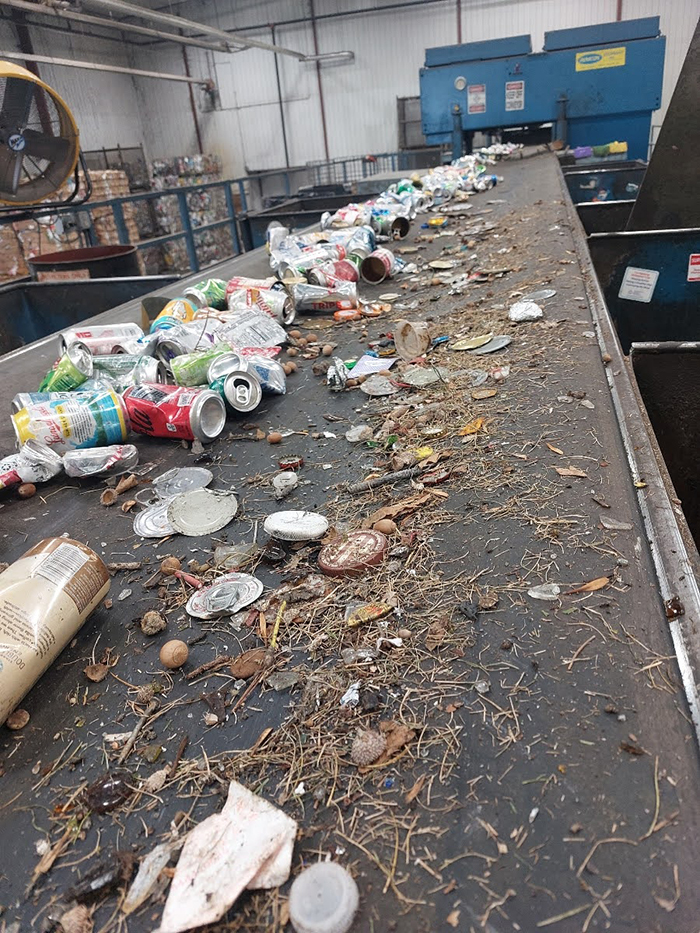Acorns drive OT County Recycling Center staff nuts
News | Published on September 27, 2022 at 3:20pm GMT+0000 | Author: Chad Koenen
0Dispose of yard waste properly

The conveyor belt at the Otter Tail County Recycling Center is filled with yard waste that could otherwise be composted and not thrown out with the trash.
Although it’s not even officially fall yet, Otter Tail County recycling staff have already encountered substantial amounts of yard waste such as acorns, leaves and grass clippings contaminating recyclable materials that come to the Recycling Center for processing.
Yard waste does not belong in recycling bins or refuse containers and is easily composted at home or at yard waste sites around Otter Tail County.
Here are some greener ideas for how to manage yard waste properly this season:
• Do not put yard waste in with trash or recycling! Then it’s just trash. Putting yard waste in the garbage is illegal. A landfill is built like a time-capsule or tomb—nothing gets in or out, so compostable waste doesn’t break down and return to the soil.
• Those who want to get rid of leaves, line a truck bed or trailer with a large tarp, and either fold over or add another tarp on top to contain leaves for transport. This is often easier than filling a bunch of bags. Individuals who can rake leaves onto a tarp laid out on the ground, then pick it up by holding the corners.
• Those who can’t use a tarp, cut down on plastic bag waste by using reusable yard waste totes, or other leaf bag alternatives. Although paper bags will work, choosing something that can be reused multiple times is the best.
• Mulch leaves a few times during the fall with a mower. This works for a light covering of leaves and is a free boost of nutrients for a lawn.
• Leave some leaves. Insects and wildlife require some leaf litter on the ground to overwinter. Leaving a light layer of leaves is beneficial for wildlife and saves you a little extra raking. Just make sure to keep leaves off the street and curb, as excess nutrients from the leaves can negatively impact water quality.
• Use leaves to mulch around the base of trees and shrubs, or in gardens. This can help regulate soil temperature, hold soil moisture, and provide nutrients for trees or perennials, much like a leaf litter layer in a forest.
• Compost your own leaves. This saves you bagging and transportation. Individual can make a simple bin out of pallets or a circle of chicken wire, or buy a bin. Layer in leaves (browns) and food scraps (greens) to get a good balance of carbon (browns) and nitrogen (greens) for the perfect compost pile. A good ratio is about 2:1 carbon to nitrogen. Green nitrogen-rich food scraps or grass clippings can get too wet, so adding double the dry brown carbon-rich leaves will help aerate your compost pile and balance out the nitrogen. Good composters know to save their leaves for use in a compost pile year round.
Yard waste can be dropped off for composting at Transfer Stations or the City of Fergus Falls Landfill site at no charge. For other locations visit ottertailcountymn.us/department/waste-disposal/.

